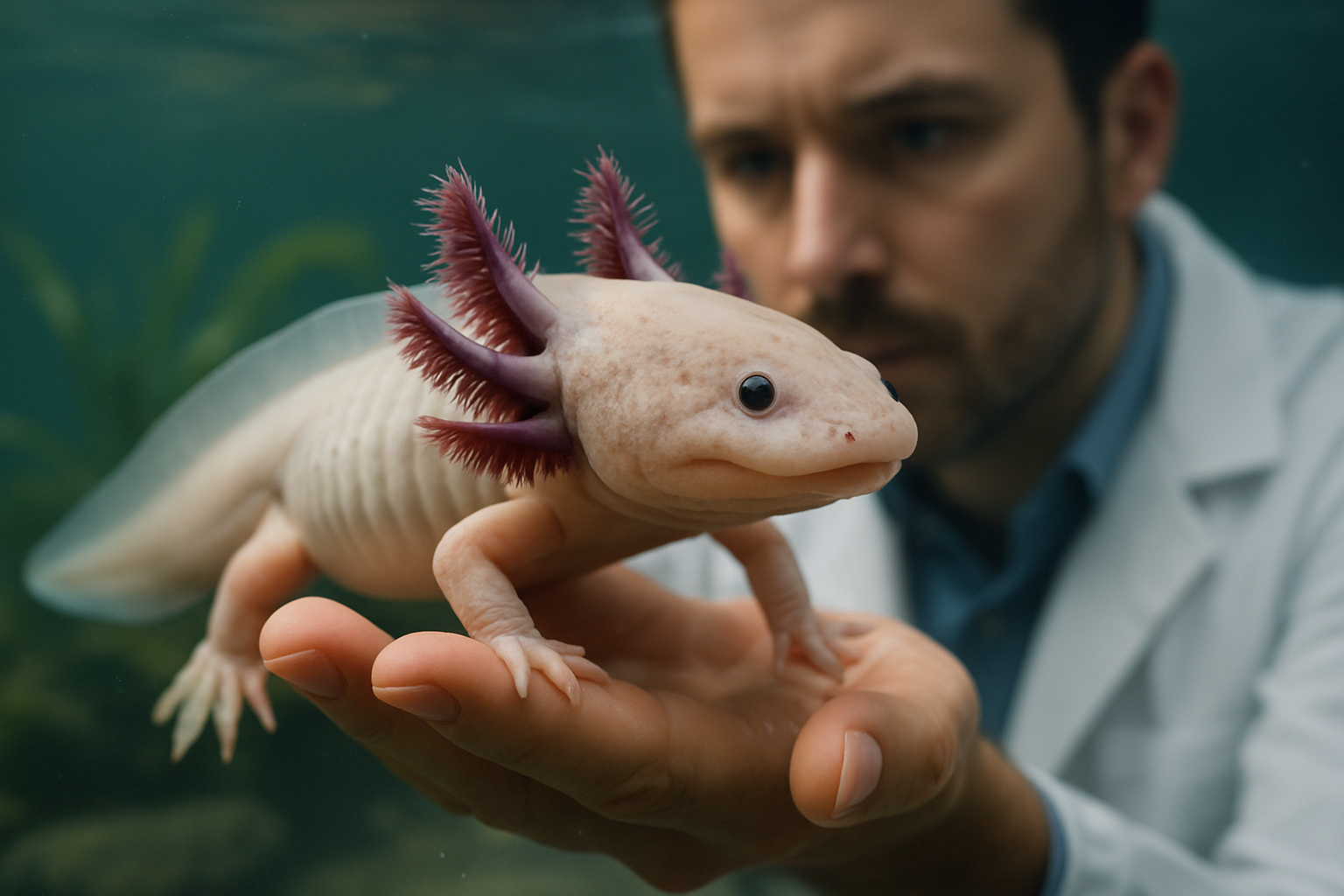The Hidden World of Axolotl Regeneration
Dive into the remarkable realm of axolotls, where science fiction meets reality. These captivating amphibians possess an extraordinary ability to regenerate entire body parts, including organs and limbs. As researchers unravel the secrets behind this seemingly magical power, the implications for human medicine and regenerative therapies continue to grow. Join us on a journey through the fascinating world of axolotl regeneration, where cutting-edge research meets ancient evolutionary adaptations.

The Mechanics of Axolotl Regeneration
The process of regeneration in axolotls begins immediately after an injury occurs. Within hours, cells at the site of the wound begin to divide and form a structure called a blastema. This mass of undifferentiated cells serves as the foundation for the regeneration process. Over the following weeks, the blastema cells differentiate into various tissue types, eventually forming a fully functional replacement for the lost body part. This process is orchestrated by a complex interplay of genes and signaling molecules that researchers are still working to fully understand.
Evolutionary Advantages and Adaptations
The axolotl’s regenerative abilities are believed to have evolved as a survival mechanism in their native habitat. These amphibians often face threats from predators and environmental hazards, making the ability to regrow lost body parts a significant advantage. Additionally, axolotls retain many juvenile features throughout their lives, a phenomenon known as neoteny. This arrested development may contribute to their regenerative capabilities, as it allows them to maintain a more plastic and adaptable cellular state.
Current Research and Scientific Breakthroughs
Scientists around the world are intensively studying axolotl regeneration, hoping to unlock the secrets that could revolutionize regenerative medicine. Recent breakthroughs include the sequencing of the axolotl genome, which has provided valuable insights into the genetic basis of regeneration. Researchers have identified key genes and signaling pathways involved in the regeneration process, opening up new avenues for potential therapies in humans. Some studies have even successfully induced limited regeneration in mammalian cells using insights gained from axolotl research.
Implications for Human Medicine
The potential applications of axolotl regeneration research in human medicine are vast and exciting. Scientists hope that by understanding the mechanisms behind axolotl regeneration, they can develop new treatments for a wide range of conditions. These could include therapies for spinal cord injuries, limb amputations, and organ damage. Some researchers are exploring the possibility of using axolotl-derived techniques to regenerate human tissues and organs, potentially revolutionizing the field of transplant medicine.
Challenges in Axolotl Research
Despite the promising advances in axolotl regeneration research, significant challenges remain. One major obstacle is the difficulty in translating findings from axolotls to humans, given the vast evolutionary distance between the two species. Additionally, the complex nature of regeneration involves numerous genes and cellular processes, making it challenging to isolate and replicate specific mechanisms. Researchers also face the challenge of ethical considerations when attempting to apply these findings to human subjects.
Conservation Efforts and Captive Breeding
As interest in axolotl research has grown, so too have concerns about the conservation status of these remarkable creatures. In their native habitat of Lake Xochimilco in Mexico, wild axolotl populations have been severely depleted due to pollution, habitat loss, and the introduction of invasive species. Conservation efforts are underway to protect and restore axolotl habitats, while captive breeding programs aim to maintain genetic diversity and ensure the survival of the species. The estimated price for a captive-bred axolotl can range from $20 to $70, depending on factors such as color morph and age.
The Future of Axolotl Regeneration Research
As technology advances and our understanding of axolotl regeneration deepens, the future of this field looks increasingly promising. Emerging techniques such as CRISPR gene editing and single-cell sequencing are providing researchers with powerful new tools to investigate the intricacies of regeneration. Some scientists are exploring the possibility of creating axolotl-inspired biomaterials that could aid in wound healing and tissue regeneration. As research progresses, we may be on the cusp of a new era in regenerative medicine, inspired by these remarkable amphibians.





